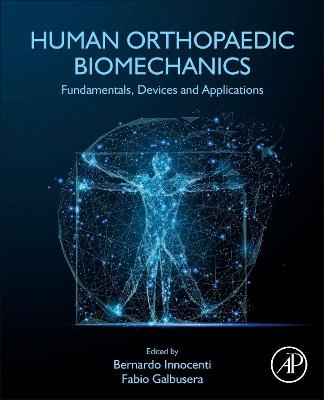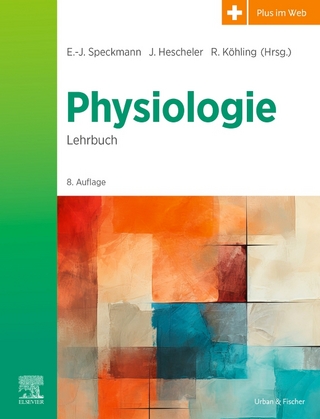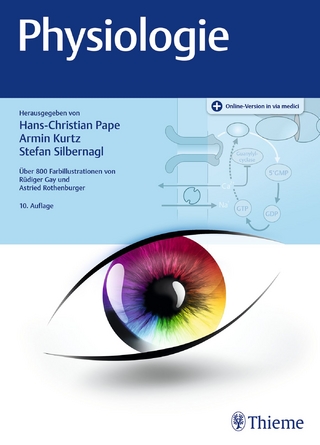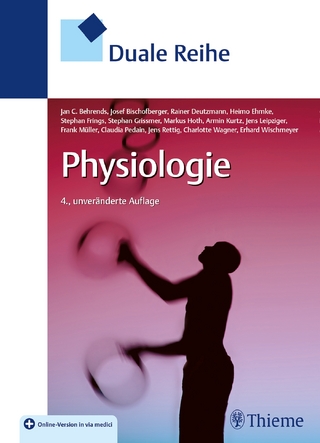
Human Orthopaedic Biomechanics
Academic Press Inc (Verlag)
978-0-12-824481-4 (ISBN)
Finally, any orthopedic surgeons looking to deepen their knowledge of biomechanical aspects will benefit from the accessible writing style in this title.
Prof. Bernardo Innocenti has been working in the field of knee orthopaedic biomechanics from more than 17 years. During his entire career he has been involved in several research projects that, applying experimental and computational methodologies, alone or together, investigate the kinematics and the kinetics of the human knee joint, in healthy or pathologic conditions and, also, with a prosthesis. He is author of co-author of more than 100 peer-reviewed publications about knee biomechanics. The analysis of the musculoskeletal loading in healthy and pathological subjects, the stress distribution in bone and in implant, and the study of prosthesis design, together with the simulation of bone remodeling and implant wear, are also additional fields in which he has been involved. Fabio Galbusera, engineer, is the Head of Spine Research at the Schulthess Clinic in Zürich, Switzerland. His main research interests are the biomechanics of the spine, the use of numerical models for its investigation as well as spinal imaging, about which he published more than 170 papers in international peer-reviewed journals. In the last years, he pioneered the use of artificial intelligence in the field of spine research, especially for the automated analysis of radiological images of the spine. One of his works in this field was awarded the ISSLS Prize for Bioengineering 2021. He is a member of the International Society for the Study of the Lumbar Spine (ISSLS), the Spine Society of Europe (EUROSPINE), the European Society of Biomechanics (ESB) and the European Society of Radiology (ESR), and is currently part of the Editorial Boards of Journal of Biomechanics, European Spine Journal, Frontiers in Bioengineering and Biotechnology and of European Radiology Experimental.Regarding books, in 2018 he edited the book “Biomechanics of the Spine: Basic Concepts, Spinal Disorders and Treatments together with Prof. Hans-Joachim Wilke, published by Elsevier.
1. Introduction: From Mechanics to Biomechanics 2. Mechanical Properties of Biological Tissues 3. Orthopaedic Biomechanics: Stress Analysis 4. Orthopaedic Biomechanics: Multibody Analysis 5. Fundamentals of Mechanobiology 6. Bone Biomechanics 7. Muscle Biomechanics 8. Ligaments and Tendons Biomechanics 9. Cartilage Biomechanics 10. Meniscus Biomechanics 11. Intervertebral Disc Biomechanics 12. Biomechanics of the Hip Joint 13. Biomechanics of the Knee Joint 14. Biomechanics of the Spine 15. Biomechanics of the Shoulder Joint 16. Biomechanics of the Ankle Joint 17. Biomechanics of Wrist and Elbow 18. Biomaterials and Biocompatibility 19. Hip Prosthesis: Biomechanics and Design 20. Knee Prosthesis: Biomechanics and Design 21. Spinal Implants: Biomechanics and Design 22. Shoulder Prosthesis: Biomechanics and Design 23. Devices for Traumatology: Biomechanics and Design 24. Regeneration and Repair of Ligaments and Tendons 25. Biomechanical Requirements for Certification and Quality in Medical Devices 26. Clinical Evaluation of Orthopaedic Implants 27. Computer-Assisted Orthopaedic Surgery 28. Experimental Orthopaedic Biomechanics 29. Challenges in the Anatomical Modeling of the Musculoskeletal System 30. Joint Kinematics Through Instrumented Motion Analysis 31. Fluoroscopy 32. Finite Element Analysis in Orthopaedic Biomechanics 33. Rigid-Body and Musculoskeletal Models 34. The Use of Computational Models in Orthopaedic Biomechanical Research
| Erscheinungsdatum | 08.03.2022 |
|---|---|
| Zusatzinfo | Approx. 250 illustrations (250 in full color); Illustrations |
| Verlagsort | San Diego |
| Sprache | englisch |
| Maße | 191 x 235 mm |
| Gewicht | 1560 g |
| Themenwelt | Medizin / Pharmazie ► Physiotherapie / Ergotherapie ► Orthopädie |
| Studium ► 1. Studienabschnitt (Vorklinik) ► Physiologie | |
| Technik ► Medizintechnik | |
| ISBN-10 | 0-12-824481-X / 012824481X |
| ISBN-13 | 978-0-12-824481-4 / 9780128244814 |
| Zustand | Neuware |
| Informationen gemäß Produktsicherheitsverordnung (GPSR) | |
| Haben Sie eine Frage zum Produkt? |
aus dem Bereich


